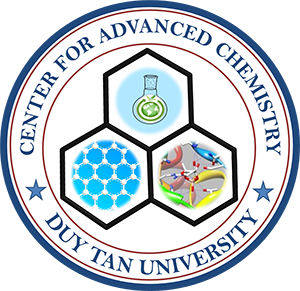In this study, a new method for preparation of cross-linked magnetic chitosan particles (MCPs) from steel slag and shrimp shells using green tea extract as crosslinking reagent has been presented. The MCPs obtained were characterized by means of X-ray diffraction analysis, Fourier-transform infrared spectroscopy, scanning electron microscopy and magnetic properties, and then were used to investigate the adsorption properties of Cu(II) and Ni(II) ions in aqueous solutions. The influence of experimental conditions such as contact time, pH value, adsorbent dose and initial metal concentration, and the possibility of regeneration were studied systematically. The Cu(II) and Ni(II) adsorption isotherms, kinetics and thermodynamics have been measured and discussed. The results show that the synthesized MCPs have high adsorption capacity for both metal ions (126.58 mg/g for Cu(II) and 66.23 mg/g for Ni(II)), and have excellent regeneration stability with efficiency of greater than 83% after five cycles of the adsorption–regeneration process. The adsorption process of Ni(II) and Cu(II) on MCPs was feasible, spontaneous and exothermic, and better described by the Langmuir model and pseudo-second-order kinetic equation. The MCPs can be applied as a low cost and highly efficient adsorbent for removal of heavy metals from wastewater due to its high adsorption capacity, easy recovery and good reusability.
Graphene has attracted widespread attention for supercapacitor applications thank to their excellent conductivity, mechanical flexibility, chemical stability and extremely high specific surface area. Here, all-graphene-oxide-supercapacitors were developed from two reduced graphene oxide (rGO) films as electrodes and one graphene oxide (GO) film as separator. The supercapacitors were then treated with 4M sulfuric acid at temperatures around 80 °C. By this treatment, the sulfuric acid molecules were physically intercalated into both rGO and GO films, which were confirmed by significant decrease intensity of characteristic peaks of sulfuric acid in Raman spectra. These sulfuric-acid-intercalated GO films can function as both quasi-solid-state electrolytes and separators. The average capacitance values measured at 100 mV s−1 of the thermally wetted supercapacitor at 84 °C is improved 93.7 times higher than that of the as-prepared all-graphene-oxide-supercapacitor. The maximum capacitance of 266 F cm−3 is obtained at scan rate 10 mV s−1 for the thermally wetted supercapacitor at 84 °C. To the best of our knowledge, this is the highest specific capacitance that has ever been reported for a graphene oxide-based supercapacitor. Importantly, being in a quasi-solid-state, the energy storage performance of supercapacitors are persistent over several thousand cycles, making it very much unlike other carbon-based supercapacitors.
We present the preparation of a redox DNA hydrogel for mediated bioelectrocatalysis of oxidoreductase enzymes for biosensor and biofuel cell applications. The noncovalent functionalization of DNA with redox molecules is achieved by intercalation of aromatic redox probes into the DNA double helix or electrostatic binding of redox-active tetraalkylammonium ions to phosphate groups on DNA. Prepared DNA redox hydrogels demonstrate the capability of mediating bioelectrocatalytic glucose oxidation by oxidoreductase enzymes. This is the first evidence that redox DNA hydrogels can replace redox polymer hydrogels for self-exchange-based mediation for bioelectrocatalytic applications. This study contributes toward advances in the use of DNA, an emerging biomaterial, in enzymatic bioelectrocatalysis-based applications.
A novel photo-curable polyurethane resin for stereolithography has been demonstrated herein. The resin was printed by stereolithography to form 3-dimensional elastomeric objects without need of any diluent. The resultant elastomer exhibited good mechanical strength, high elasticity, and excellent cell adhesion and proliferation.
Novel castor oil-segmented thermoplastic polyurethane series (PUs) have been prepared and extensively characterized in this study. The castor oil, poly(tetrahydrofuran) polyol, and poly(dimethylsiloxane) have been employed as soft segments in the polymer synthesis with a maximum bio-based content up to 14.1 wt%. We demonstrate here that it is possible to prepare thermoplastic polyurethane containing castor oil via polyaddition approach in which the formation of prepolymer needs to be carried out with the addition of reasonably small amount of castor oil together with excess amount of the diisocyanate in the very first step. This is followed by the addition of the other polyols and finally a low molecular weight chain extender. The developed synthesis resulted in the formation of branched thermoplastic polyurethane with an elongation at break of about 1200%, which is considerably high compared to reported values for polyurethanes containing castor oil as soft segments. We have demonstrated that mechanical properties and flexibility of polyurethane can be significantly altered by both incorporated castor oil and controllable poly(dimethylsiloxane)/poly(tetrahydrofuran) polyol ratio during the synthesis. Especially the synthesized polyurethanes exhibited good biocompatibility and high transparency, which are useful properties for polymers as potential biomaterials. In addition, thermal stability and thermal transition of polyurethanes have been investigated.
Transparent and flexible energy storage devices have garnered great interest due to their suitability for display, sensor and photovoltaic applications. In this paper, we report the application of aerosol synthesized and dry deposited single-walled carbon nanotube (SWCNT) thin films as electrodes for an electrochemical double-layer capacitor (EDLC). SWCNT films exhibit extremely large specific capacitance (178 F g−1 or 552 μF cm−2), high optical transparency (92%) and stability for 10 000 charge/discharge cycles. A transparent and flexible EDLC prototype is constructed with a polyethylene casing and a gel electrolyte.



